-
Locations
Campuses in EuropeCampuses in The AmericasCampuses in AsiaLe Cordon Bleu International
- Online Learning
Contact your local representative - Our Story
- Programmes
- Brochures
- News & Events
- Contact
- Find Course
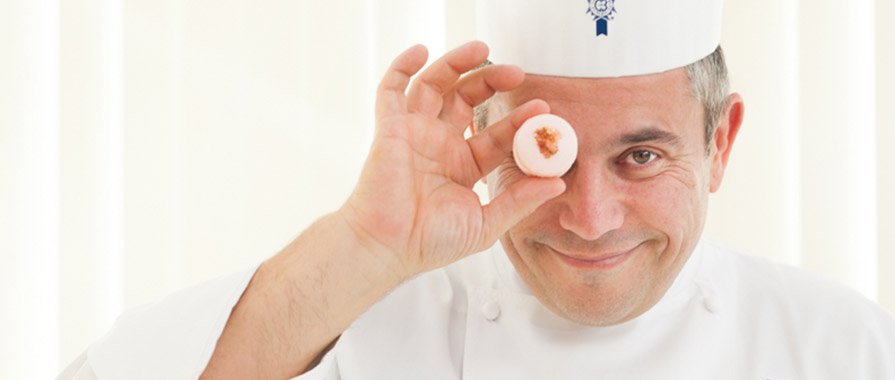
Le Cordon Bleu Kobe Pastry Chef : Patrick Lemesle
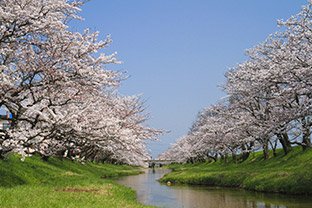
Since coming to Japan in 2006, Chef Patrick Lemesle has spent almost 10 years in the country. He loves Japanese culture and ingredients, and this time he chose sakura (Japanese flowering cherry) because it is an ingredient in which you can literally feel Japan. Sakura is a quintessential seasonable ingredient in Japanese cuisine.
“Japan has four wonderful seasons. In spring, flowers are budding. Summer has hot weather, though in the evening there is a refreshing breeze. Autumn brings fall foliage. In winter, it snows. The scenery changes dramatically throughout the year. And then, in the spring there is hanami, a culture of admiring sakura. For example, in Tokyo, from late March to early April, every year one can see cherry trees in full bloom at parks, schools, along riverbanks, and in a variety of other locations. Seeing sakura in peak blossom is a beautiful and moving experience.”
Chef Patrick is passionate about all four seasons in Japan. However, his favorite season is spring. So, he chose a spring ingredient as the theme for this article. Every year he goes to the neighborhood park and enjoys hanami. He is enthusiastic about expressing through food such a cultural symbol of spring in Japan.
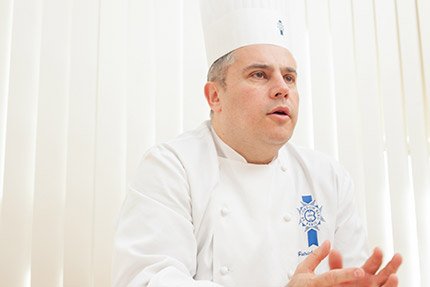
In Japan, there is a time-honored, seasonal spring custom of treating guests with edible sakura buds and leaves that have been pickled in salt. Chef Patrick has tasted sakura cuisine many times. He says that experience gave him a big hint for selecting a pastry for this article. “A representative example is sakura mochi, a Japanese confectionary. It is a pounded rice cake wrapped in a preserved cherry leaf. There is bean paste inside the mochi. The sweetness of the bean paste and the saltiness of the leaf bring out the flavor in each other exquisitely. It is a perfect balance of sweetness and saltiness. Other examples are inarizushi (sushi wrapped in fried tofu), cake, and sake with sakura buds floating on the surface. The sakura season is limited, and that is why many shops put sakura themed items on the menu.”
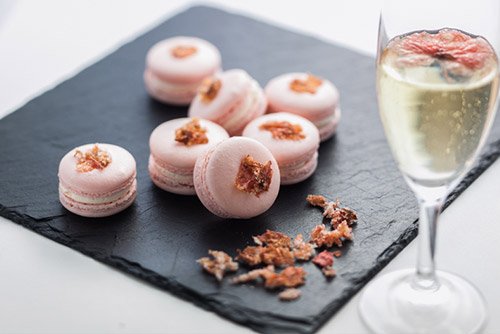
Chef Patrick has made a “sakura macaroon” this time. This confectionary is certainly a beautiful cherry color with a lovely appearance. According to Chef Patrick, when you savor this with champagne as an aperitif, still more harmony is brought forth. “I got a hint from salted cherry buds. I was fascinated by the intricacy of the salty taste.”Sprinkle some Japanese-made salted cherry buds with powdered sugar by hand. Let this dry. Then brush off the excess salt and sugar. After doing this extra work, garnish the macaroon with his original cherry buds. The affinity with champagne is exceptional.
One further point is to conceal some framboise confiture inside of the macaroon. “At first, I was not satisfied because I could not express the freshness of sakura. But when I added sourness and vibrancy through the framboise confiture, the macaroon immediately began to shine vividly.”
This sakura macaroon has the scent of spring. Together with sakura floating on champagne, we would like for you to experience the feeling of spring in Japan.
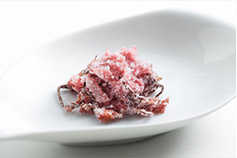
Pickled cherry blossoms are made by pickling with salt the flower buds of, in general, Yaezakura (a double-flowered cherry tree). For generations, the Japanese people have used pickled cherry blossoms to drink sakurayu(salted sakura bud tea) for celebrations, and it is also used for sakura mocha, inarizushi, and as a topping for onigiri (a rice ball).
Copyright © 2024 Le Cordon Bleu International B.V. All Rights Reserved.